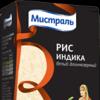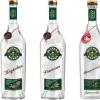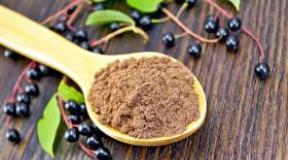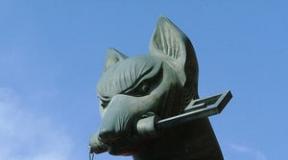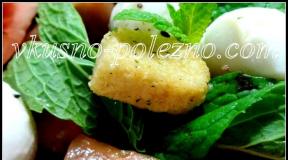Guard 5. Cognac "The Old Guard"
The Old Guard is an aged five-year-old drink produced at the Uralalco plant in Perm. The spirits that make up cognac are kept in wooden barrels for a long time. Blending technology allows you to make the drink soft and pleasant to the taste. Distillates and sugar syrup are gradually added to alcohols. The mixture thus obtained is sent to oak containers.

The line of the "Old Guard" is very limited. Three names of the product have a common exposure (5 years) and differ only in the volume of bottles. Supplied in containers of 375, 500 and 700 ml.
Tasting notes about cognac "The Old Guard"
The color of the "Old Guard" is golden amber, very rich. The aroma is mild. The bouquet has oaky and fruity notes. Light alcohol content practically does not clog the main tones.
The taste of cognac "Old Guard" is smooth and soft. Connoisseurs note delicate shades of dried fruits, chocolate, wood and vanilla. Aftertaste - warming, short duration. You do not need to eat the "Old Guard" - it is recommended to drink it as a digestif. 
The cost of cognac
The products of the Uralalko plant belong to the budget segment of the cognac market. The cost of goods rarely exceeds a thousand rubles. For a bottle of the "Old Guard" with a volume of 375 ml, you will give 470-500 rubles. a volume of 500 ml will cost 490-520 rubles. A large bottle (700 ml) costs about 860-950 rubles.
How to distinguish the original "Old Guard" from a fake
The bottle of the "Old Guard" has a classic shape. The name of the product is not only on the label, it is engraved on the bottom of the bottle along with five stars. On the side there is a recess in which the company logo is glued - the Latin letter "N", surrounded by laurel wreaths. The same logo is located on the film surrounding the cork and neck of the bottle. Examine the label carefully. Make sure there are:
- information about the manufacturer;
- image of a white eagle;
- Manufacturer country;
- number "5" (number of years of exposure).
Production history
The first mention of the plant dates back to 1942. In the 1950s, wine materials were supplied to the enterprise mainly from the Krasnodar and Stavropol Territories. Moldova and Tajikistan were later added to this list. Modernization in 1968 led to the fact that the plant significantly increased the pace of production.
"Uralalco" in the western part of the Urals is considered the leading producer of alcoholic beverages. The plant has a state license allowing it to develop and bottle alcoholic beverages. The quality is monitored by employees of a special laboratory. The last decade brought more than 60 international and domestic awards to Uralalco employees. Among them - 20 gold medals.
Serial television film "White Guard" represents a new cinematic reading of the famous novel Mikhail Bulgakov. This is a talented and original interpretation of the director Sergei Snezhkin filled with love and reverence for the work of the writer. The director set himself the task of getting as close as possible to Bulgakov's great word, and he managed to reflect in the film not only the author's style, but also the spirit of the era.
The action of the picture takes place in the winter of 1918 in Kyiv, engulfed in the fire of the Civil War. The Turbin family - brothers Alexey, Nikolka and their sister Elena - are involved in the cycle of military and political events, their personal drama is revealed against the backdrop of the tragedy of the whole country. Kyiv (although Bulgakov calls it simply the City) changes hands: it is occupied by German troops, who, after the signing of the Treaty of Brest-Litovsk, begin to retreat, clearing the way for Petliura's armies. The hetman's command leaves the inhabitants to their fate and flees, and in fact the city is defended only by volunteers.
We see Russian officers, junkers, former students knocked "off the screws of life" by war and revolution. It is they who take upon themselves the most cruel blows of wartime, rally into the White Guard in order to unsuccessfully defend the City from the opposing enemy forces. Aleksey, Nikolka and their friends - officers of the White Army Myshlaevsky, Karas and Shervinsky - are enlisted in the scattered ranks of the city's defenders. Against the backdrop of a constant change of power, each of them will have to make their own moral choice. Someone, realizing the doom of the White movement, disbands the resistance, someone prefers death in battle. And it is here, in the City, that the main thing is revealed: there can be no winners in a fratricidal war.
The undoubted success of the picture was the image of Alexei Turbin, brilliantly embodied on the screen by Konstantin Khabensky. It seems to absorb the features of the epic tragedy of the entire Russian intelligentsia, the echoes of which reach us even now. An irresolvable moral choice - with whom to be, whom and what to serve. The hero has to go through a difficult path of the collapse of his former ideals and ideas.
Belief in life, in its victorious power, is the main motive of the "White Guard". Therefore, it is no coincidence that the idea of preserving the House as the only foundation of the familiar world becomes central to the picture. This small, walled space contains the eternal. The lampshade on the lamp, the measured movement of the clock, clean starched tablecloths and the Dutch tiled stove are not just things, but a cultural tradition that has become everyday life.
The revolution brought the collapse of the old and, it would seem, very durable world, and now the House and the World have become enemies. But the House of Turbins withstood the tests sent by the war and the revolution. The tragic feeling of hopelessness in the finale of the picture is replaced by a feeling of expectation of change ... After all, while love reigns in a small house behind cream curtains, family traditions are not forgotten, friends gather at the table and music sounds, life goes on. If the house is alive, then the City will also live.
In the serial feature film by Sergei Snezhkin, some love lines are strengthened compared to the novel, for example, Alexei begins an affair with Shpolyansky's mistress Yulia. Some images get their logical conclusion. For example, Lariosik is more strongly shifted from caricature towards the tragedy of a small person. In the brother of Nai-Turs, the cold determination and steadfastness of a person who protects what he is devoted to are emphasized.
Interesting Facts
The Turbins' apartment was rented in the famous house-museum on Andreevsky Spusk. To get "the same City" and hide the layers of modernity, the filmmakers artificially aged Kyiv. So, for example, plastic windows along the entire street were closed with wooden shutters, houses were ennobled with signs "Shop" and "Restaurant". The damaged paving stones were powdered with artificial snow, and fake icicles were hung on the lanterns. Bulgakov's memorial plaque was removed from the museum building, and the monument to the writer was disguised with a carved wooden fence, which blended into the interior so well that the museum staff asked not to dismantle it.
Prizes and awards
GOLDEN EAGLE - 2012 - winner in the category "Best TV movie or mini-series".
Director: Sergey Snezhkin
Scenario: Sergey Snezhkin, Sergey Dyachenko, Marina Dyachenko
Operator: Sergei Machilsky
Composer: Yuri Poteenko
The text reads: Igor Kvasha
Cast: Konstantin Khabensky, Ksenia Rappoport, Fyodor Bondarchuk, Alexei Serebryakov, Sergei Garmash, Mikhail Porechenkov, Evgeny Stychkin, Evgeny Dyatlov, Sergei Shakurov, Ekaterina Vilkova, Yuri Stoyanov, Alexei Guskov, Irina Skobtseva, Ksenia Kutepova, Maxim Leonidov, Vladimir Vdovichenkov, Evgenia Dobrovolskaya , Igor Vernik, Artur Smolyaninov, Anna Banshchikova, Nikolay Efremov, Artur Vakha, Yanina Studilina, Igor Chernevich, Sergey Brun, Yuri Itskov, Sergey Barkovsky, Oleg Volku, Mikhail Vasserbaum, Ivan Krasko, Maria Lugovaya, Olga Kirsanova-Miropolskaya, Valery Kukhareshin , Dmitry Blazhko
Five-year-old cognac with a noble touch of French cognac spirits.
Manufacturer
The Bastion factory was opened in Perm in 1942 for bottling wine and vodka. The enterprise was created at the facilities of the wine production evacuated from the besieged Leningrad. In 2003, the plant became part of the Beluga group of companies, the leader of the domestic market for the production and distribution of alcoholic beverages in Russia. Since then, the plant has been constantly increasing its capacity and has been in the top 3 cognac producers in Russia for several years. During its more than 75 years of history, the plant has maintained and developed a reputation as a responsible and high-quality manufacturer. In 2016, the factory revived the legendary Bastion cognac, famous for its unsurpassed taste and strict design. The new record of the Bastion plant in 2017 is the production of more than 2,450,000 decaliters (more than 71 million bottles) of strong alcohol.
Electronic sommelier
The philosophy of the brand is built around the events of the era of the Napoleonic Wars. We represent courage, nobility, courage and greatness of military glory. We send consumers back to a time when the words "honor" and "valor" were not empty words. And under the roar of guns and the whistle of bullets, legends were born. The name itself refers us to the times of la vieille Garde - the Old Guard of Emperor Napoleon, which was the best and most combat-ready unit of the Napoleonic army. The Guard became legendary, which was reflected in the popular expression "The Old Guard".
Cognacs are the most common alcoholic beverages in the world today. They are valued for their unsurpassed taste, nobility and endurance. These drinks include cognac "Old Guard" (5 years), reviews of which are discussed below. It contains spirits that are aged for at least five years. The drink pleases the consumer with its amber color and excellent harmonious taste.
A bit of history
In modern times, the cognac "Old Guard" (5 years old), the photo can be seen in the article, is produced by the Uralalco plant, which is located in the Western Urals. Back in the fifties of the last century, all wine materials were delivered here from the Stavropol and Krasnodar regions. Then, after some time, Moldova and Tajikistan joined them. In 1968, the plant was modernized, and soon it increased the rate of alcohol production. Today, the plant has a license for the production and bottling of alcoholic beverages, the quality of which is constantly monitored by laboratory staff. The manufacturer produces cognac "The Old Guard" (5 years) in a limited line, which includes three product names, they differ only in the volume of containers (375, 500 and 750 milliliters). But this did not stop him from receiving high awards at various competitions and good reviews among lovers of noble alcohol.

guard "(5 years): description
This drink is produced from wine materials from various countries of the former Soviet Union, from grape varieties that are distinguished by a rich aroma and multifaceted taste. Alcohol is aged for at least five years in oak barrels. Then the drink is blended, after which water and sugar syrup are added to it to give the drink a special softness. guard "(5 years) has good reviews, because its taste and aroma are quite pleasant, for which it is appreciated. Alcohol stands out in amber color, soft smooth taste with hints of vanilla, and dried fruits, a pleasant warming aftertaste, although short-lived. Aroma the drink is very soft with hints of different fruits and oak, a slight alcohol content is felt, which does not clog other tones in any way.Brandy is served in its pure form as a digestif, you can also offer desserts, fruits, chocolate or coffee with it.

Production technology
This alcoholic drink is created using new technologies. First, wine materials go to the factory, where they are distilled and placed in for a period of at least five years. Then the alcohol is blended and sugar syrup and pure distilled water are alternately added. This makes it possible to make the drink soft and pleasant to the taste. Then the mixture is again sent to barrels for a while. So it turns out an alcoholic drink with a strength of forty degrees. It is bottled on three lines, where there are special bottle rinsers that perform an important function - disinfecting containers with a water-alcohol mixture. This allows the consumer to receive a pure original drink without foreign odors.
Composition, nutritional value, storage conditions
Only natural ingredients are contained in its "Old Guard" (5 years), therefore, the reviews are positive. This is also affected by its cost, which ranges from five hundred to nine hundred rubles, depending on the volume of containers. So, this alcohol contains natural French that stand in wooden barrels for at least five years. The drink also includes softened distilled water, sugar. The nutritional value of cognac is 230 kilocalories per hundred grams of drink. Its shelf life, subject to all conditions, is unlimited. It is recommended to store alcohol at temperatures up to twenty degrees Celsius in rooms with good ventilation, where direct sunlight does not fall. Humidity in this case should be no more than 83 percent.









